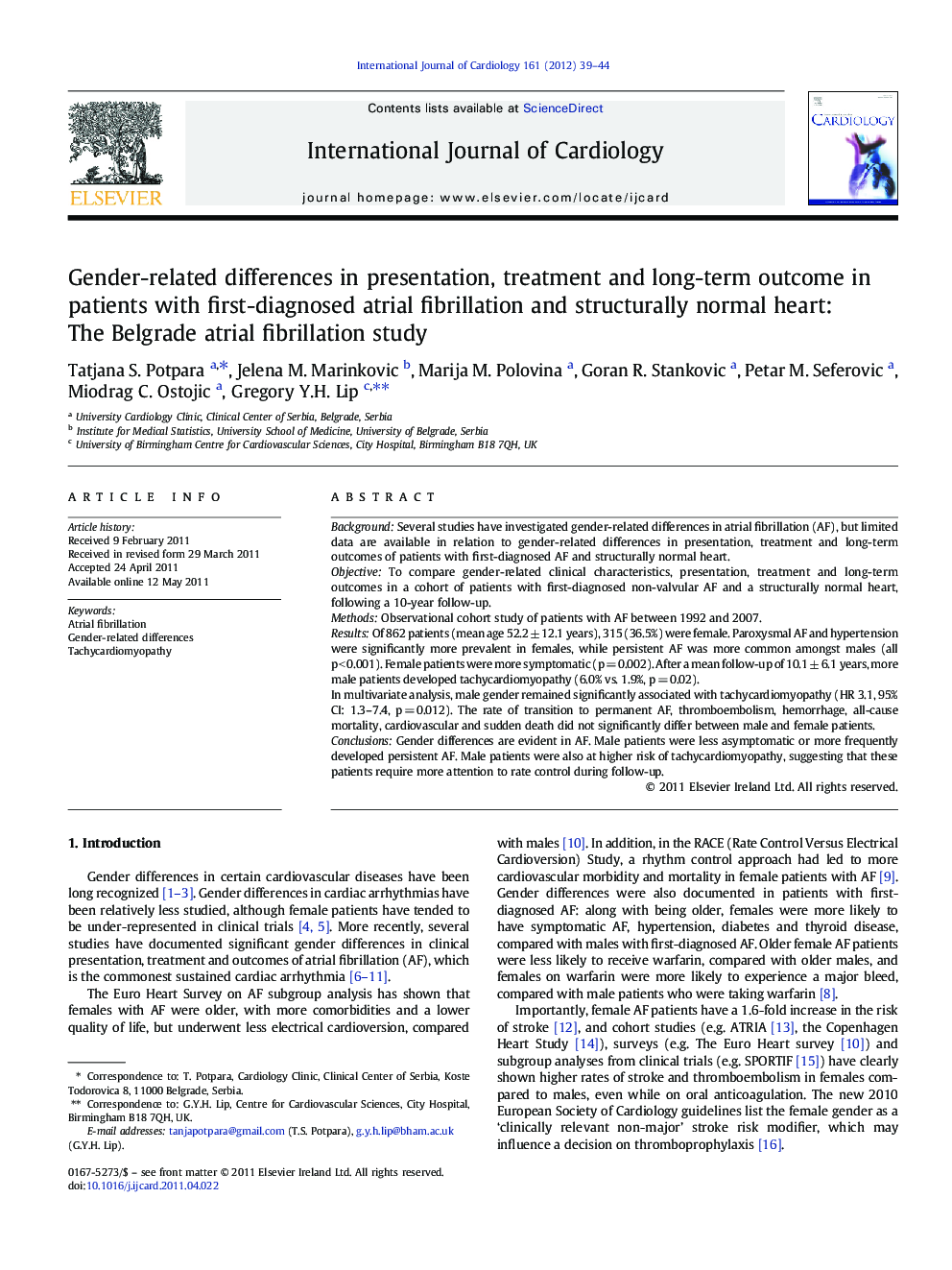| Article ID | Journal | Published Year | Pages | File Type |
|---|---|---|---|---|
| 2929564 | International Journal of Cardiology | 2012 | 6 Pages |
BackgroundSeveral studies have investigated gender-related differences in atrial fibrillation (AF), but limited data are available in relation to gender-related differences in presentation, treatment and long-term outcomes of patients with first-diagnosed AF and structurally normal heart.ObjectiveTo compare gender-related clinical characteristics, presentation, treatment and long-term outcomes in a cohort of patients with first-diagnosed non-valvular AF and a structurally normal heart, following a 10-year follow-up.MethodsObservational cohort study of patients with AF between 1992 and 2007.ResultsOf 862 patients (mean age 52.2 ± 12.1 years), 315 (36.5%) were female. Paroxysmal AF and hypertension were significantly more prevalent in females, while persistent AF was more common amongst males (all p < 0.001). Female patients were more symptomatic (p = 0.002). After a mean follow-up of 10.1 ± 6.1 years, more male patients developed tachycardiomyopathy (6.0% vs. 1.9%, p = 0.02).In multivariate analysis, male gender remained significantly associated with tachycardiomyopathy (HR 3.1, 95% CI: 1.3–7.4, p = 0.012). The rate of transition to permanent AF, thromboembolism, hemorrhage, all-cause mortality, cardiovascular and sudden death did not significantly differ between male and female patients.ConclusionsGender differences are evident in AF. Male patients were less asymptomatic or more frequently developed persistent AF. Male patients were also at higher risk of tachycardiomyopathy, suggesting that these patients require more attention to rate control during follow-up.
